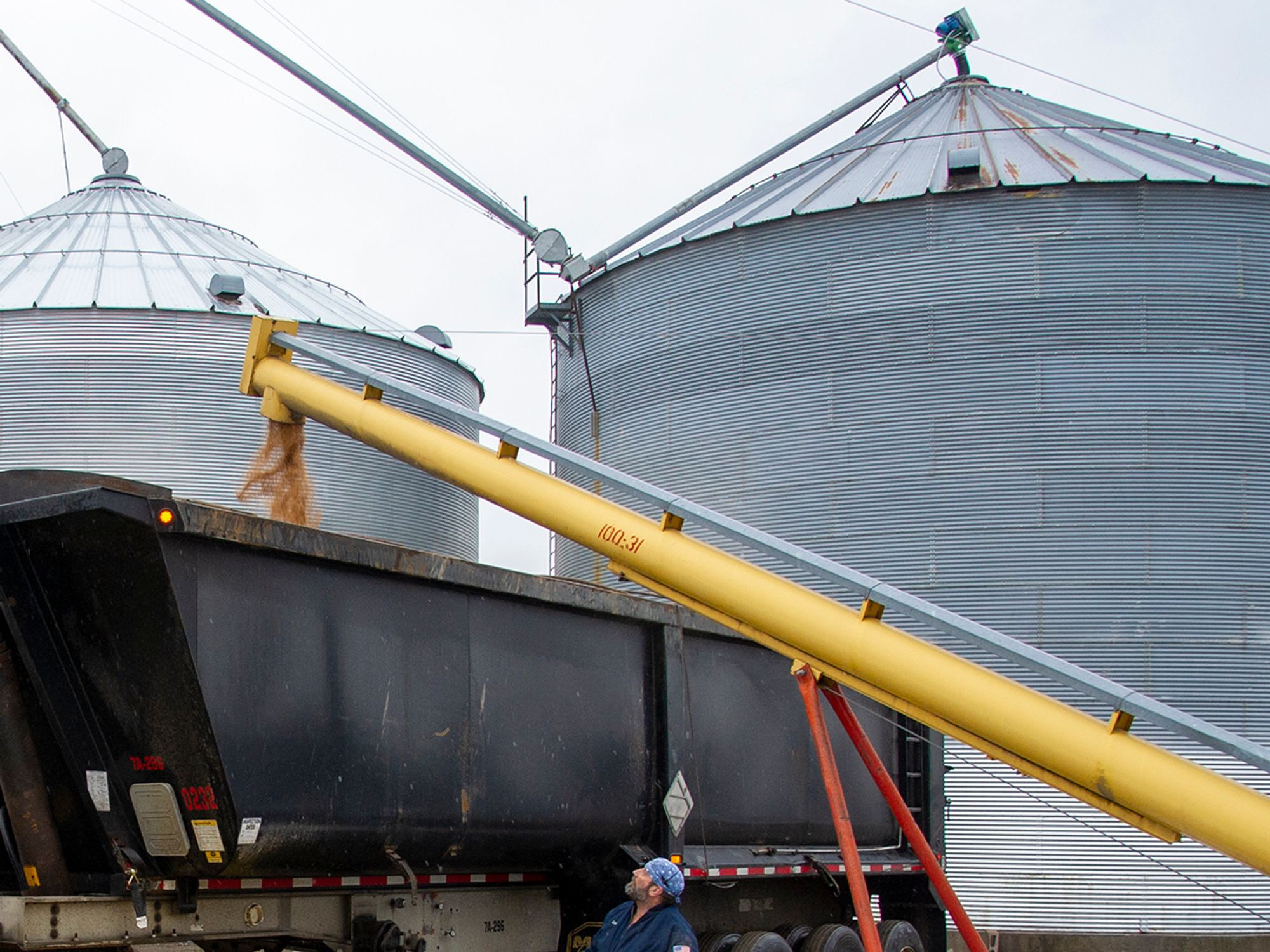Grain handling

- Grain handling facilities may include grain elevators, feed mills, flour mills, and more.
- Safety hazards associated with grain handling operations include suffocation and falls, fires, explosions, and injury from improperly guarded machinery.
Grain handling facilities, as defined by the Occupational Safety and Health Administration (OSHA) grain handling standard at 1910.272, include grain elevators, feed mills, flour mills, rice mills, dust pelletizing plants, dry corn mills, soybean flaking operations, and the dry grinding operations of soy cake.
Numerous safety and health hazards are associated with grain handling operations. Suffocation and falls are the two leading causes of deaths at grain handling facilities. Other hazards include fires, explosions, electrocutions, and injuries from improperly guarded machinery. Exposures to grain dust and associated airborne contaminants can also occur; such contaminants include molds, chemical fumigants, and gases associated with decaying and/or fermenting silage.
The OSHA standard contains requirements for the control of grain dust fires and explosions, and certain other safety hazards associated with grain handling facilities. It applies in addition to all other relevant provisions of Part 1910 (or Part 1917 at marine terminals).
The appendices to 1910.272 serve as nonmandatory guidelines to assist employers and employees in complying with the requirements of 1910.272, as well as to provide other helpful information.
Employers must:
- Develop and implement an emergency action plan meeting the requirements of 1910.38.
- Provide training to employees at least annually and when changes in job assignment will expose them to new hazards.
- Issue a permit for all hot work. See exceptions in 1910.272(f). Inform contractors of known potential fire and explosion hazards, as well as applicable safety rules.
- Develop and implement a written housekeeping program. See 1910.272(j).
- Cover all receiving-pit feed openings with grates. See 1910.272(k).
- Equip all fabric dust filter collectors with a monitoring device. See 1910.272(l).
- Implement preventive maintenance procedures. See 1910.272(m).
- Equip grain stream processing equipment with an effective means of removing ferrous material from the incoming grain stream.
- Provide at least two means of emergency escape from galleries and at least one means of escape from elevators. See 1910.272(o).
- Equip all direct-heat grain dryers with automatic controls. See 1910.272(p).
- Follow regulations in 1910.272(q) pertaining to inside bucket elevators.
In addition, before employees enter grain storage bins, the employer must:
- De-energize and disconnect, lockout and tag, or block off all mechanical, electrical, hydraulic, and pneumatic equipment that presents a danger (see 1910.272(g)(1)(ii)). Grain should not be emptied or moved into or out of the bin while workers are inside.
- Prohibit and prevent workers from “walking down grain” (where an employee walks on grain to make it flow within or out from a grain storage structure) and similar practices where walking on grain is intended to make it flow (see 1910.272(g)(1)(iv)).
- Prohibit and prevent worker entry onto or below a bridging condition, or where grain is built up on the side of the bin (see 1910.272(g)(6)).
- Train all workers for the specific hazardous work operations they are to perform when entering and working inside of grain bins (see 1910.272(e)).
- Provide each worker entering a bin from a level at or above stored grain, or when a worker will walk or stand on stored grain, with a body harness. The body harness should have a lifeline that is positioned and is of sufficient length to prevent a worker from sinking further than waist-deep in grain (see 1910.272(g)(2)).
- Provide workers with rescue equipment, such as winch systems, that are specifically suited for rescue from the bin (see 1910.272(g)(4)).
- Station an observer who is equipped to provide assistance and perform rescue operations outside the bin (see 1910.272(g)(3)).
- Ensure that communications are maintained between the observer and the workers who entered the bin (see 1910.272(g)(3)).
- Test the air within a bin for oxygen content and the presence of hazardous gases before entry (see 1910.272(g)(1)(iii)).
- Provide and continue ventilation until any unsafe atmospheric conditions are eliminated. If toxicity or oxygen deficiency cannot be eliminated, workers must wear appropriate respirators (see 1910.272(g)(1)(iv)(A) and (B)).
- Issue a permit each time a worker enters a bin, unless the employer is present during the entire entry operation. The permit must certify that the above precautions have been implemented before workers enter the bin (see 1910.272(g)(1)(i)).
